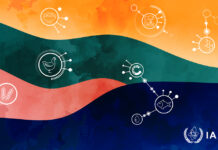Meet the Medal-Winners in SA’s Wildlife Olympics
In an engaging and unique celebration of South Australia’s diverse wildlife, the state has hosted what can only be described as the "Wildlife Olympics." This imaginative event shines a spotlight on some of the most impressive athletes from the animal kingdom, offering a fun and educational look at their extraordinary abilities. For more info, refer to this news link.
Celebrating Wildlife: The Concept
The Wildlife Olympics is a creative initiative designed to bring attention to South Australia’s rich biodiversity and the remarkable traits of its wildlife. In the spirit of the global Olympic Games, animals are celebrated for their natural prowess, agility, and strength. This event not only highlights the incredible capabilities of these animals but also fosters a deeper appreciation and understanding of the natural world.
The Stellar Performers
1. The Cheetah: Gold Medal in Speed
Known as the fastest land animal, the cheetah has unsurprisingly secured the gold medal in speed. Capable of reaching speeds of up to 70 miles per hour in short bursts covering distances up to 500 meters, the cheetah’s acceleration is faster than most sports cars. This extraordinary speed is vital for hunting in the wild, making the cheetah an apex predator in its environment.
2. The Peregrine Falcon: Gold Medal in Aerial Agility
Taking to the skies, the peregrine falcon is renowned for its remarkable aerial agility and speed. This bird of prey can dive at speeds exceeding 200 miles per hour, making it the fastest bird and the fastest member of the animal kingdom when in a dive. This incredible feat allows the peregrine falcon to catch its prey with unparalleled precision.
3. The Kangaroo: Gold Medal in Jumping
A star of the Australian outback, the kangaroo has earned its gold medal in jumping. With powerful hind legs, a kangaroo can leap distances of over 30 feet in a single bound and reach heights of up to 10 feet. This ability is essential for their survival, enabling them to cover large distances quickly in search of food and water.
4. The Dolphin: Gold Medal in Aquatic Acrobatics
In the oceans and rivers, the dolphin stands out for its intelligence and playful nature. Dolphins are known for their acrobatic displays, which include leaping out of the water, spinning in the air, and performing flips. These behaviors are not just for show; they play a crucial role in communication, hunting, and social interaction within dolphin pods.
5. The Ant: Gold Medal in Strength
Though small in size, the ant is a powerhouse of strength, earning it the gold medal in this category. Ants can carry objects that are 50 times their body weight, a feat that is comparable to a human lifting a car. This strength is vital for their survival, as it allows them to build complex nests and transport food.
The Importance of the Wildlife Olympics
The Wildlife Olympics serves multiple purposes. Primarily, it acts as an educational tool, informing the public about the unique characteristics and abilities of various animals. By presenting this information in an engaging and entertaining manner, the event helps to foster a greater appreciation for wildlife and the importance of conservation efforts.
Additionally, the Wildlife Olympics highlights the need to protect and preserve natural habitats. Many of the featured animals face threats from habitat destruction, climate change, and human activity. By drawing attention to their incredible abilities, the event also underscores the importance of conservation initiatives aimed at safeguarding these species for future generations.
Public Reaction and Engagement
The Wildlife Olympics has captured the imagination of the public, with many people taking to social media to express their enthusiasm and support. Hashtags such as #WildlifeOlympics and #AnimalAthletes have trended on platforms like Twitter and Instagram, with users sharing facts, photos, and videos of their favorite animal athletes.
Educational institutions have also embraced the concept, incorporating the Wildlife Olympics into their curricula to teach students about biology, ecology, and the importance of conservation. Schools across South Australia have organized viewing parties and discussions, making the event a valuable educational resource.
Additional Information and Reviews
For those interested in learning more about the Wildlife Olympics and the incredible animals featured, the event organizers have provided a wealth of information on their official website. Visitors can explore detailed profiles of each animal, watch video highlights of their performances, and read expert commentary on their abilities.
The Wildlife Olympics has also received positive reviews from wildlife experts and conservationists. Dr. Jane Goodall, renowned primatologist and conservationist, praised the event for its innovative approach to wildlife education. "The Wildlife Olympics is a wonderful initiative that highlights the incredible abilities of animals and the importance of protecting their habitats," she said. "It’s a fun and engaging way to educate people about the natural world and inspire them to take action for conservation."
Conclusion
The Wildlife Olympics has proven to be a resounding success, capturing the hearts and minds of people across South Australia and beyond. By celebrating the extraordinary abilities of animals, the event not only entertains but also educates and inspires. As we marvel at the speed of the cheetah, the agility of the peregrine falcon, and the strength of the ant, we are reminded of the incredible diversity of life on our planet and the importance of working together to protect it.
For more information about the Wildlife Olympics and to meet the medal-winners, visit this link. This news has been highly trending on Google search today, reflecting its widespread appeal and significance.

































